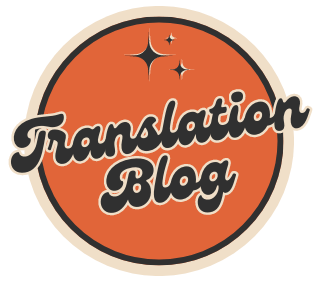I still wince a little when I remember strolling through a night market in Taipei and spotting a bright-red hat that proudly declared, in English, “Enjoy Your Free Goat.” The vendor explained that the slogan was supposed to say “Enjoy Your Freedom,” but a single character in the source Mandarin phrase had slipped sideways during translation. Nobody caught the error until thousands of caps were already stitched, boxed, and shipped. A costly typo? Absolutely. Yet it was also a gentle reminder that language—delightful, nuanced, unpredictable language—never travels alone. It shows up wearing culture, context, and the occasional double meaning.
That’s why multilingual branding on apparel, especially customized hats, is more than a design flourish; it’s a fragile handshake with every new market you enter. One wrong accent mark and a brand can teeter between clever and cringe. I think about that a lot. Maybe too much.
Hats: Tiny Billboards, Global Audience
A hat is small. At first glance it’s just six panels of fabric, a brim, some stitching. But turn it into a walking billboard—embroider your logo, translate a tagline—and suddenly it’s wandering through airports, festivals, and conference halls you may never visit in person. The return on that square-inch real estate can be remarkable, or, if the wording goes astray, memorably regrettable.
Global e-commerce revenue in apparel crossed the half-trillion-dollar mark last year.¹ Custom merch rides inside that wave, propelled by teams, esports crews, micro-brands, and established giants alike. Truth be told, hats sit right at the center because they’re unisex, size-forgiving, and—let’s be candid—people with bad-hair days buy more of them than we like to admit.
Yet space on a crown or a patch is limited. Twelve letters, maybe fourteen if you shrink the type or risk unreadable stitch work. That constraint makes linguistic precision non-negotiable. Translators must balance brevity with punch, accuracy with nuance, and they must do it while considering how the phrase will curve over a seam. It’s delicate, perhaps maddening work, but when it’s right the hat looks effortless.
Translation 101 (Hat Edition)
Keep it short, but not soulless. A Spanish tagline can balloon by 20 percent compared with its English source. On a trucker cap, that might squeeze the design uncomfortably close to the mesh. Sometimes we trim adjectives; other times we massage the phrase altogether—maintaining intent while shaving characters.
Mind directionality. Hebrew, Arabic, and Farsi read right-to-left. That sounds obvious until you realize your team created a faux-3D patch where the text arcs clockwise. Embroidery machines do exactly what the file tells them, even if the curve forces the script backward. A sanity check by a native reader, before digitizing, saves real dollars.
Accents and diacritics aren’t decorative. I once saw a French cap that swapped é for e to “keep things simple.” It also changed the meaning from summer-esque to an unprintable insult. Diacritics belong there; adjust the stitch count or swap to sublimation, but don’t ditch them.
Color talks. White may symbolize purity in the U.S., yet it signals mourning in some East Asian cultures. A spotless white custom dad hat proclaiming joy in Japanese weddings? It could land awkwardly. Monterey’s design crew routinely reviews palette choices after the linguists sign off, just to be sure nothing feels tone-deaf.
Compliance text hides—until it doesn’t. Care instructions, country-of-origin labels, fiber content: they must appear in the local language. Yes, that means a legal micro-label down under the sweatband. It’s small, often unseen, but regulators absolutely see it.
How TranslationBlog and Monterey Company Tag-Team the Process
- Discovery call. We ask the brand why hats? Why now? That quick chat often exposes assumptions—like a plan to print a 20-character Thai slogan in 12-point tiny capitals.
- Message refinement. TranslationBlog’s linguists craft the most concise, culturally sound version. Drafts bounce back and forth until everyone nods.
- Proof on mock lids. Monterey’s artists drop the phrase onto 3-D hat renderings—beanies, structured snapbacks, low-profile dad hats—so the client can squint at every comma (or lack of one).
- Sample run. One or two physical caps get stitched. We check kerning, density, and whether the thread shade pops enough under shop lighting.
- Full production & fulfillment. Once the sample passes muster, machines whir and boxes pile up. That’s the fun, satisfyingly noisy bit.
- Post-launch review. Oddly underrated. We glance at social tags, customer selfies, even return reasons. If a country reacts colder than predicted, we revisit translations. Nobody’s too proud for a tweak.
A Quick Personal Aside (Because Hats Are Personal)
Last spring I helped a boutique coffee chain launch bilingual bucket hats—English on one side, Arabic on the other, reversible like a novelty coin. The first prototype arrived, I flipped the brim, and instantly spotted an extra curly mark turning قهوة (coffee) into قوة (strength). Not disastrous, but definitely off-brand. We caught it, replaced the patch, and the client never knew how close they came to marketing “strength in a cup” instead of “coffee.” These tiny rescues seldom make headlines, yet they keep marketing managers sleeping soundly.
Common Pitfalls You Can Totally Avoid
- Copy-paste cross-script errors. Transferring text from Word to an embroidery digitizer sometimes scrambles Unicode. Verify glyph integrity before hitting “send.”
- One-size-fits-all fonts. An edgy condensed font might look edgy in Latin characters but collapse into illegibility in Devanagari. Test, test again.
- Ignoring local head sizes. Average head circumference varies. Southeast Asian markets often favor slightly smaller caps. Ordering all XL blanks? Costly.
- Relying on machine translation for slang. Yesterday’s meme dies quickly. By the time it reaches production, the joke may read archaic. Humans still judge freshness better than algorithms.
The Tricky Part—Contradictions in Practice
Brands want consistency. Yet absolute consistency sometimes clashes with cultural resonance. For example, a neon-pink visor screams fun in Brazil but risks looking childish in German corporate giveaways. Do you adjust hue per region or enforce a uniform global palette? Reasonable people disagree. I lean pragmatic; small tweaks rarely dilute brand equity, but that’s me. Others hold the line. The answer floats in a grey zone—just like language nuance.
A Simple Checklist Before You Hit “Order”
- Short, inspiring phrase? Check.
- Native linguist proofread—twice? Check.
- Visual mockup on the exact hat style? Check.
- Diacritics rendered cleanly in the embroidery file? Check.
- Compliance label translated and placed? Check.
- Sample approved under natural and retail lighting? Check.
- Post-launch feedback loop scheduled? Yep.
Stick that list on your project board, and you’ll dodge 90 percent of the headline-grabbing mistakes.
Final Thoughts—Not Neatly Tied with a Bow
Maybe the world doesn’t hinge on a single stitched syllable… or maybe it does. I vacillate. Still, I’m convinced that a well-translated, beautifully made hat whispers respect. It tells customers you bothered to meet them in their language, on their terms, and right above their eyes. That’s intimate branding territory.
So if you’re ready to send your story wandering across borders—stitched in cotton twill, inked on recycled polyester, or perched proudly on a vegan-leather patch—start with the words. TranslationBlog will keep them honest; The Monterey Company will keep them stylish. And together, we’ll try very hard to avoid any surprise goats.

